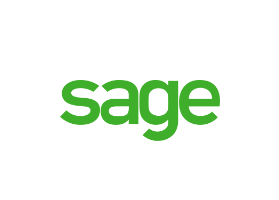In the last few weeks, we have seen a raft of new guidance from government and HMRC. As the country begins to exit the lockdown, this leaves many business owners with some important decisions to make about how to proceed. This is a positive step, although we are mindful that it is still early days, particularly for those in the retail and hospitality sectors, which look set to continue with restrictions for some time yet.
This briefing note provides updates and commentary on the following issues:
- Job retention scheme: key deadline approaching
- Discretionary grants: difficulties become apparent
- Cash flow and the next six months: work to be done
- Self employed income support scheme: extension
- Other matters
- And finally
Job retention scheme
Although it has been known for some time that the scheme was to run to the end of October, it is becoming clear that the government is intending to begin phasing out support from August onwards.
One key change is that from 1 July, there will be no “new entrants” to the scheme. Only employees already on furlough or employees who have previously been furloughed (and are being refurloughed) will be covered by the scheme from that date. Given that furlough must cover a minimum of three weeks, this effectively means that if you wish to furlough an employee for the first time, they must be furloughed by 10 June at the latest (this Wednesday).
On a more positive note, from 1 July, it will however be possible to bring employees back to work on a part-time basis, with the furloughed element covered by HMRC. However, as noted in the previous paragraph, this only applies to employees already on furlough (or who have previously been furloughed). This means that if you want to access part-time furlough arrangements in the future, any potentially affected employee must already be furloughed, or must be furloughed by 10 June for at least three weeks.
It remains to be seen how the part time furlough rules will be monitored but we are expecting further detailed guidance on all aspects of the job retention scheme on 12 June (this Friday). We will update you on any key changes. Remember, in order to furlough, you must notify your employee and we recommend this is confirmed by letter. We can provide templates if you need them. Please also remember that once furloughed, an employee cannot undertake any work. (We understand that HMRC have created teams who are actively checking claims, so please do be careful.)
Companies will gradually be expected to start contributing to the cost of any employees on furlough, starting in August, with a reduction in furlough claims to exclude employers’ NI and pension contributions. In September, employees will also be expected to pay 10% of salary costs (with HMRC paying 70% to make up to 80% total) and in October this will increase to 20% (with the HMRC payment reducing to 60%).
In the meantime, if you have any questions, please contact us for specific guidance. We are here to help.
Discretionary grants
We have covered these grants in recent updates. We know that most local authorities have now opened portals to access information and to apply for funding.
Feedback and our own review of this issue suggests that, as we suspected, it is not straightforward for businesses to easily access this support, for several reasons, not least that the information required seems to be somewhat more detailed than for the previous grants (for small businesses and the retail, hospitality and leisure sectors). It appears that the grant is still geared towards funding fixed property-related costs, so those of you working from home may find it difficult to claim.
However, in spite of all this, the possibility of a claim for discretionary grant should not be ignored and we encourage you to look at the detailed guidance and the application process. Remember that it you have already benefited from grant funding under the previous two schemes, you cannot also claim under this scheme.
The government guidance is here:
Search your local authority website for the application process. Do let us know if we can help.
Cash flow and the next six months
In previous updates, we have talked of the need to look carefully at cash flow to the end of the year and into 2021.
It is our experience that many businesses are actually in a reasonably favourable cash flow position at the present time, partly because of government support and partly because, paradoxically, many businesses’ customers have continued to pay outstanding invoices whilst, at the same time, lockdown has drastically reduced outgoings.
We see the situation changing somewhat in the next six months or so for several reasons:
- the restart will see many businesses incurring direct costs for work which will not be invoiced to customers and paid for several months (the reverse of the situation noted above);
- the job retention scheme will reduce over the next three months and there is currently no indication that it will continue after the end of October
- many businesses will have to operate with procedures in place to deal with social distancing and safe working – this is likely to reduce efficiency and require expenditure on infrastructure (screens, signage etc)
Rather than assume everything will return to pre-Covid trade patterns, we believe that all businesses should be looking at the following:
- prepare a cash flow forecast for at least the next six months. This does not need to be complex, but does need to cover expected receipts from sales and grant support, and payments to employees, contractors and suppliers. Remember to include regular outgoings for property costs and existing finance commitments
- review staff requirements. We do not approach this issue lightly and are acutely aware that this is something which affects individuals’ livelihoods. However, it is a critical issue and, with the reduction of support under the job retention scheme, sadly we believe that there will be a need for some businesses to reduce headcount. This issue is already affecting larger businesses and we have seen regular reports in the media. Unfortunately, small business is not immune to these pressures but there can be a tendency to put off difficult decisions, often because of personal relationships.
- continue to review opportunities for payment holidays and deferral of payment due dates. As you will know, VAT liabilities falling due in the period 12 March to 30 June are deferred to 31 March 2021 and self assessment tax payments due 31 July are deferred to 31 January. Obviously, anything to help cash flow is a good thing, but remember that these liabilities will still need to be paid.
- look at BBLS and CBILS loan funding. We have covered these in previous updates so do not intend to do so in detail here. Just remember that BBLS is for loans up to £50,000 and CBILS is for loans above £50,000. BBLS is a standard interest rate of 2.5% and a fixed term of 6 years, of which the first year is interest and capital repayment free. CBILS is more flexible; the term and interest rate will depend on the relevant business sector and individual requirements. Please also remember that this funding is available until the end of September so you do need to make a decision on this well before then.
Self employment income support scheme
Those of you who have been eligible to claim under the scheme should by now have received payment from HMRC.
If you have not yet checked eligibility or made a claim, please refer to our update of 20 May for further details.
The scheme is now extended to run for the three months to October. We understand it will operate the same way as before, so we assume that anyone who received payment for the three months to June will automatically qualify for the second payment.
The scheme has not been without its problems, not least that it does not cover anyone whose income from self-employment is less than 50% of their total income. It also does not cover anyone who has ceased to be self-employed in the current tax year. We are aware that HMRC is starting to cross-check claims against current year tax records, so please be aware of this specific requirement.
If you have any questions, as always, please let us know.
Other issues
We have seen some confusion about the status of the local authority grants, the job retention scheme and the self employment income support scheme. These are grants and not loans, so they will not need to be repaid. They are, however, taxable, so will need to be reported as income in your accounts for the current financial year. The loans made under BBLS and CBILS are, of course, repayable in the same way as normal finance.
We hear in the news that the government are looking at a July mini-budget. There is much speculation about planned changes, with suggestions of a temporary reduction in VAT, an employers NI holiday and other tax cuts, all designed to boost the economy. Sadly, we suspect that few of these measures will help small businesses but we will continue to monitor the situation and advise you at the appropriate time.
We noted in a past update that fake HMRC email scams were on the increase. We understand that there was, in fact, an increase of 74% in these emails in March so please do take care.
We see that there is a further delay to the introduction of the construction industry VAT reverse charge rules. Originally it had been delayed to October but this is now extended to 1 March 2021.
And finally
As the lockdown unwinds, mindful that some sectors are still heavily restricted, many businesses are facing a unique challenge – when to start returning to normal working. There is a huge amount of guidance available from government and elsewhere and in some respects, the volume of information is overwhelming. We do not have any answers but we, like you, are trying to find our way to some kind of normal. We have chosen to start operating a reduced office presence (and are fortunate that we are able to do so) but are still largely working from home. We understand that many businesses are intending to continue home working for all staff until September where the nature of the business means it is possible to do so. Clearly we are all different and we must do what we think is right for us and our staff, whilst also trying to operate as closely to normal as we can.
We gratefully digest all feedback and contributions and use these as part of our regular updates. Please do feel free to forward this to anyone who you think might benefit and do check out other information on https://acklandwebb.co.uk/blog/
We remain here to provide help and support as far as we can. If you need assistance or further guidance, please contact any one of the team.
As always, take care
DM





